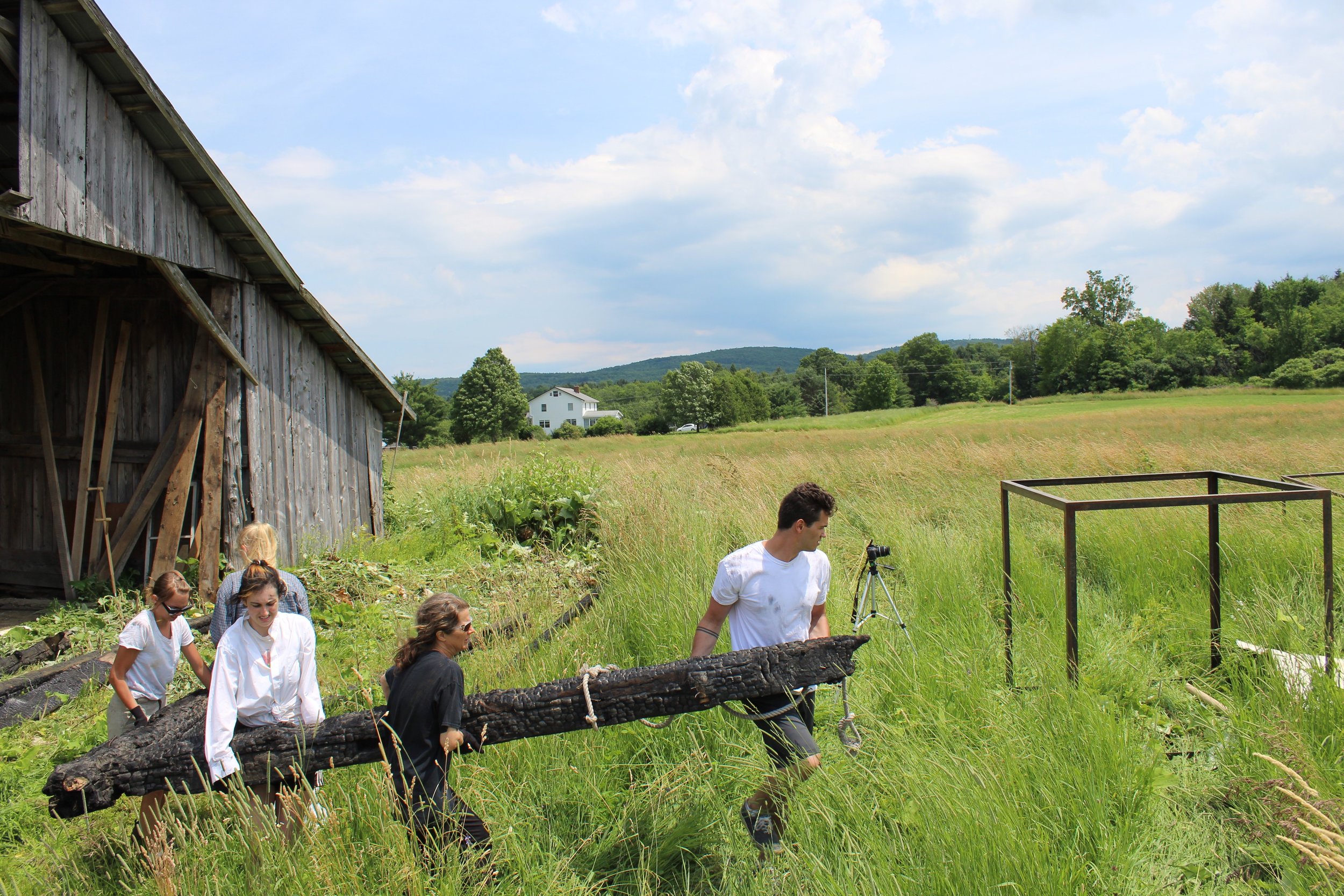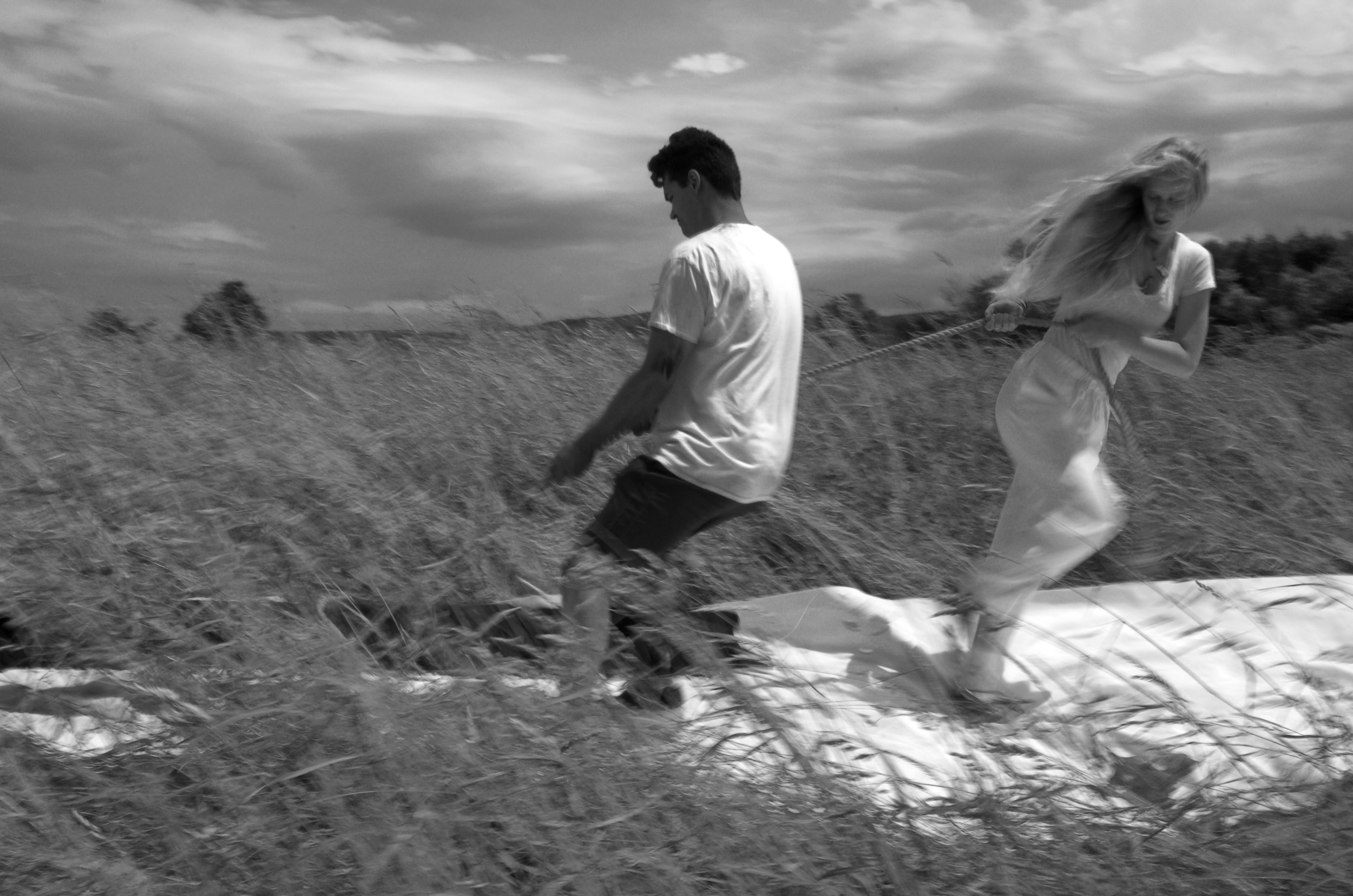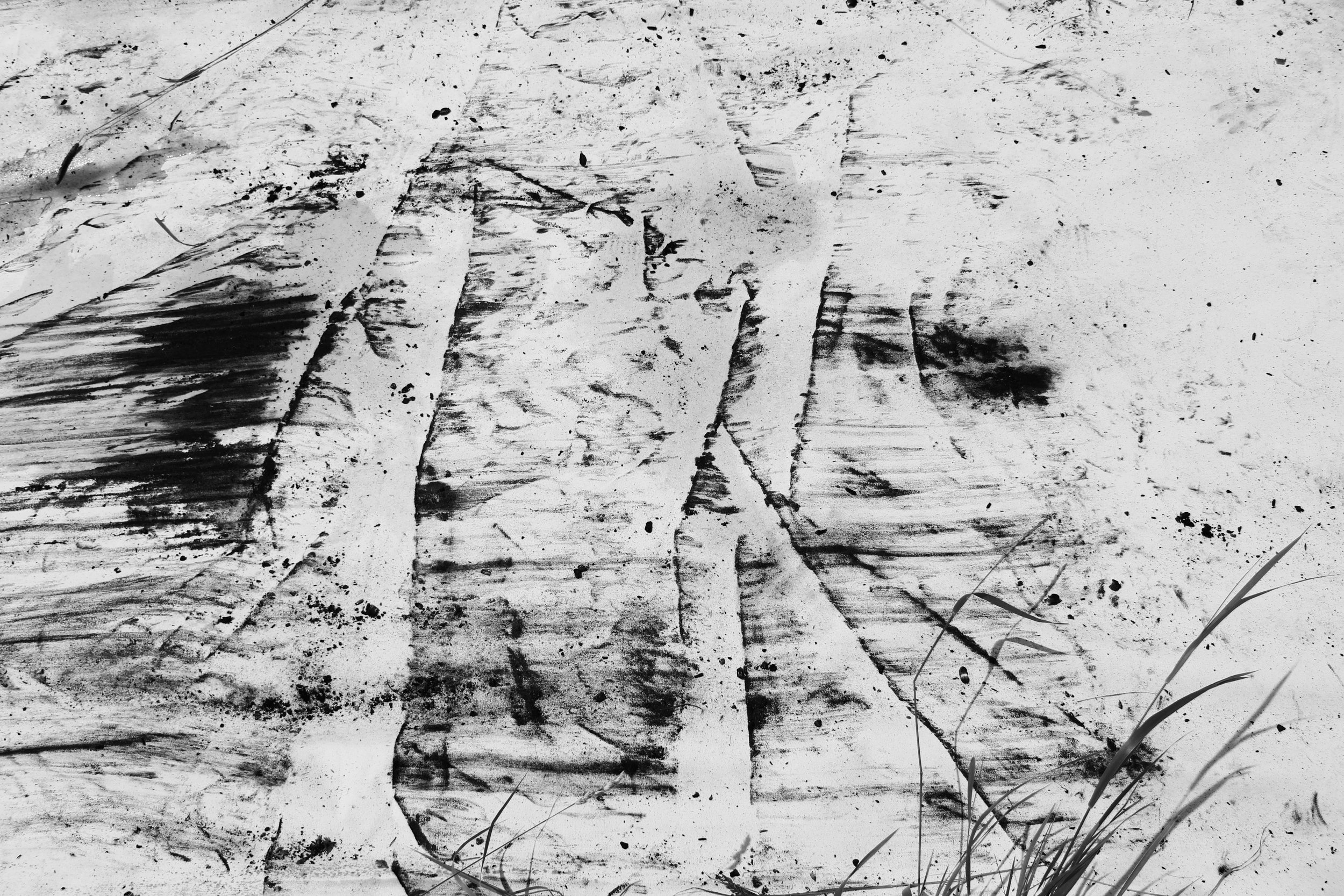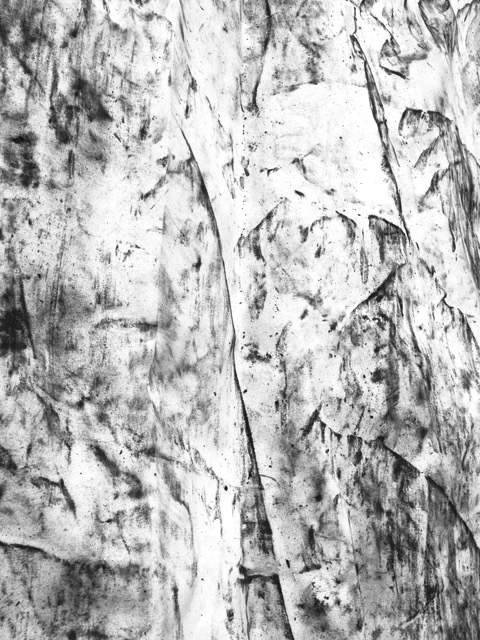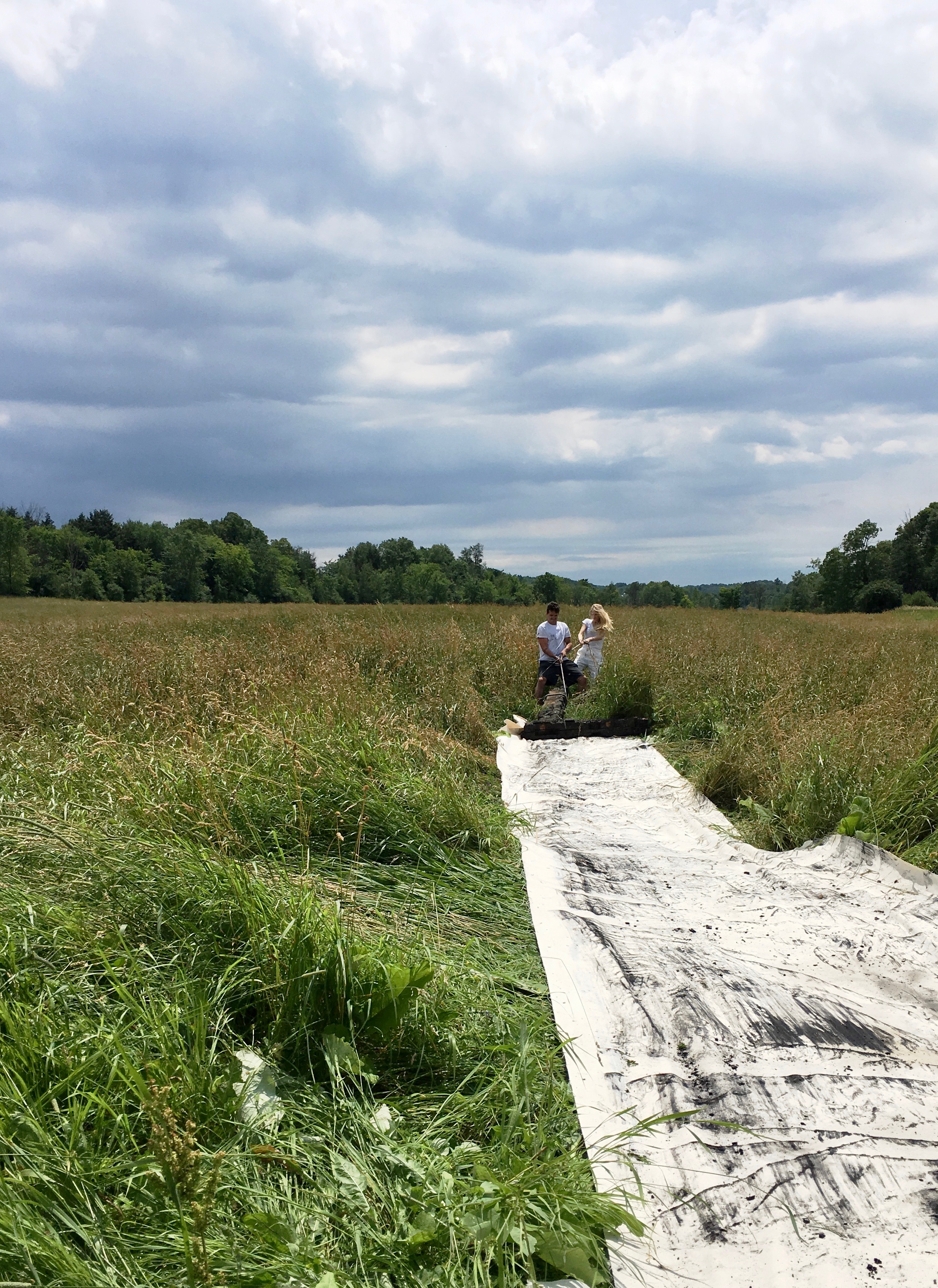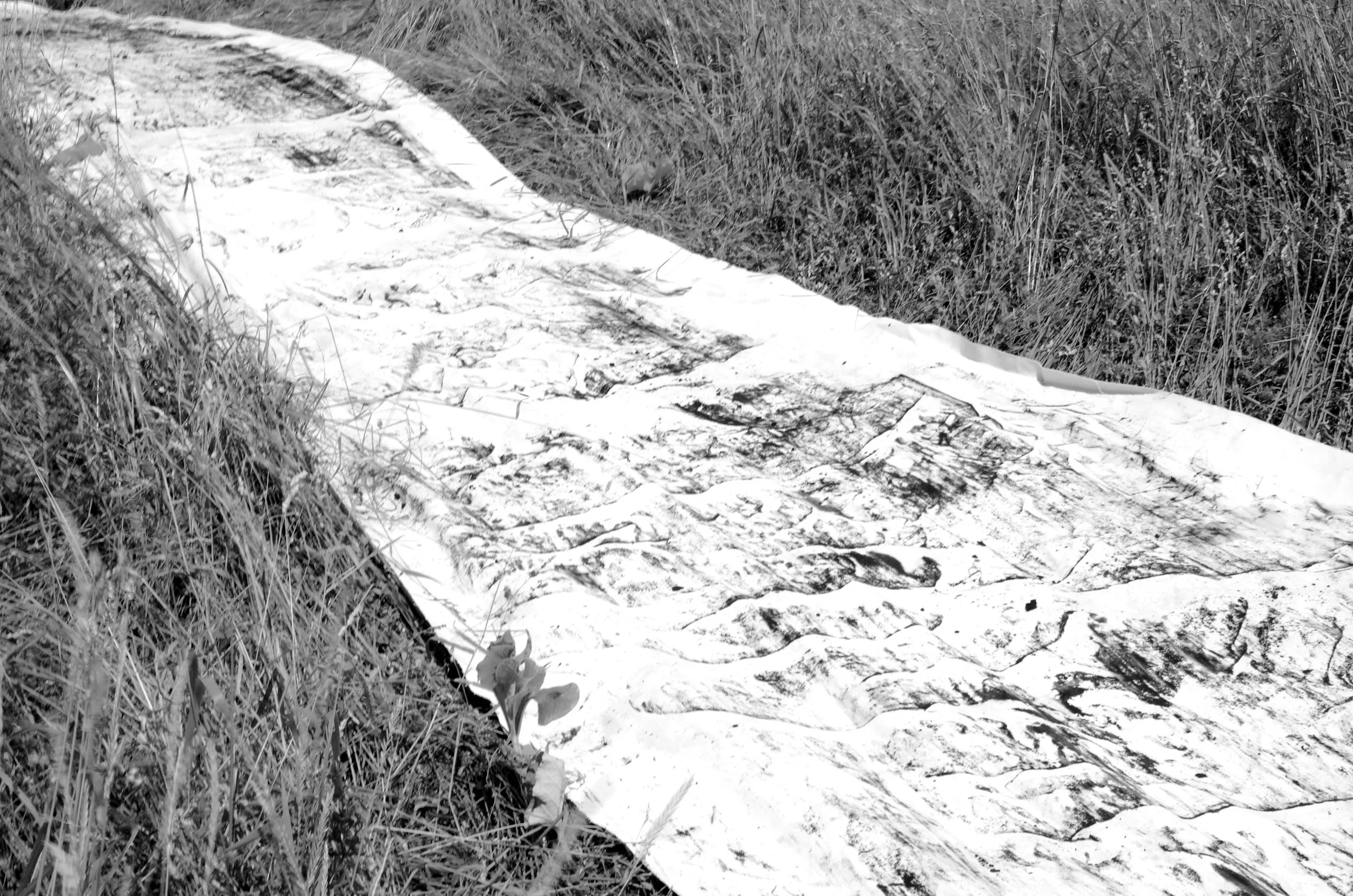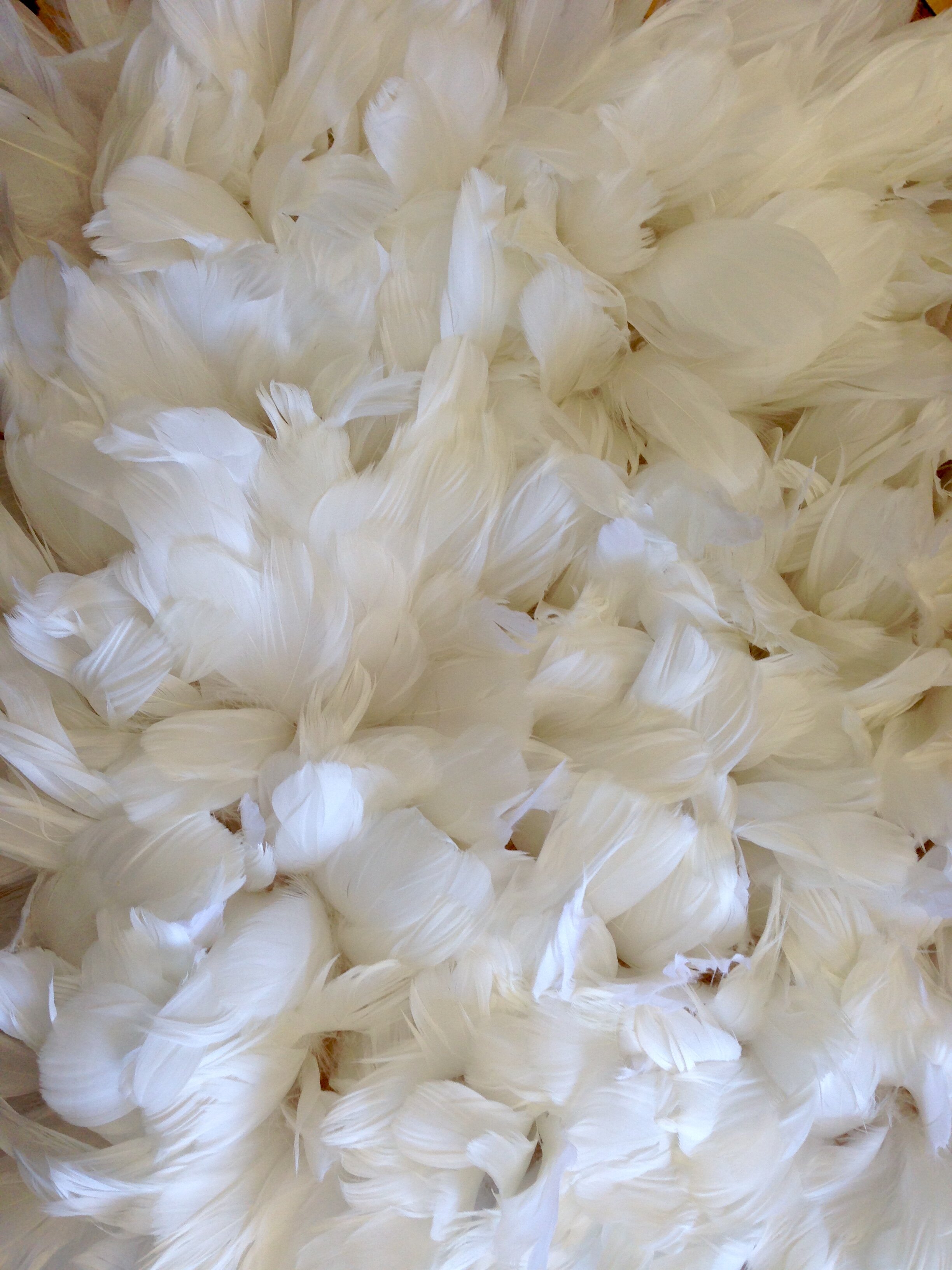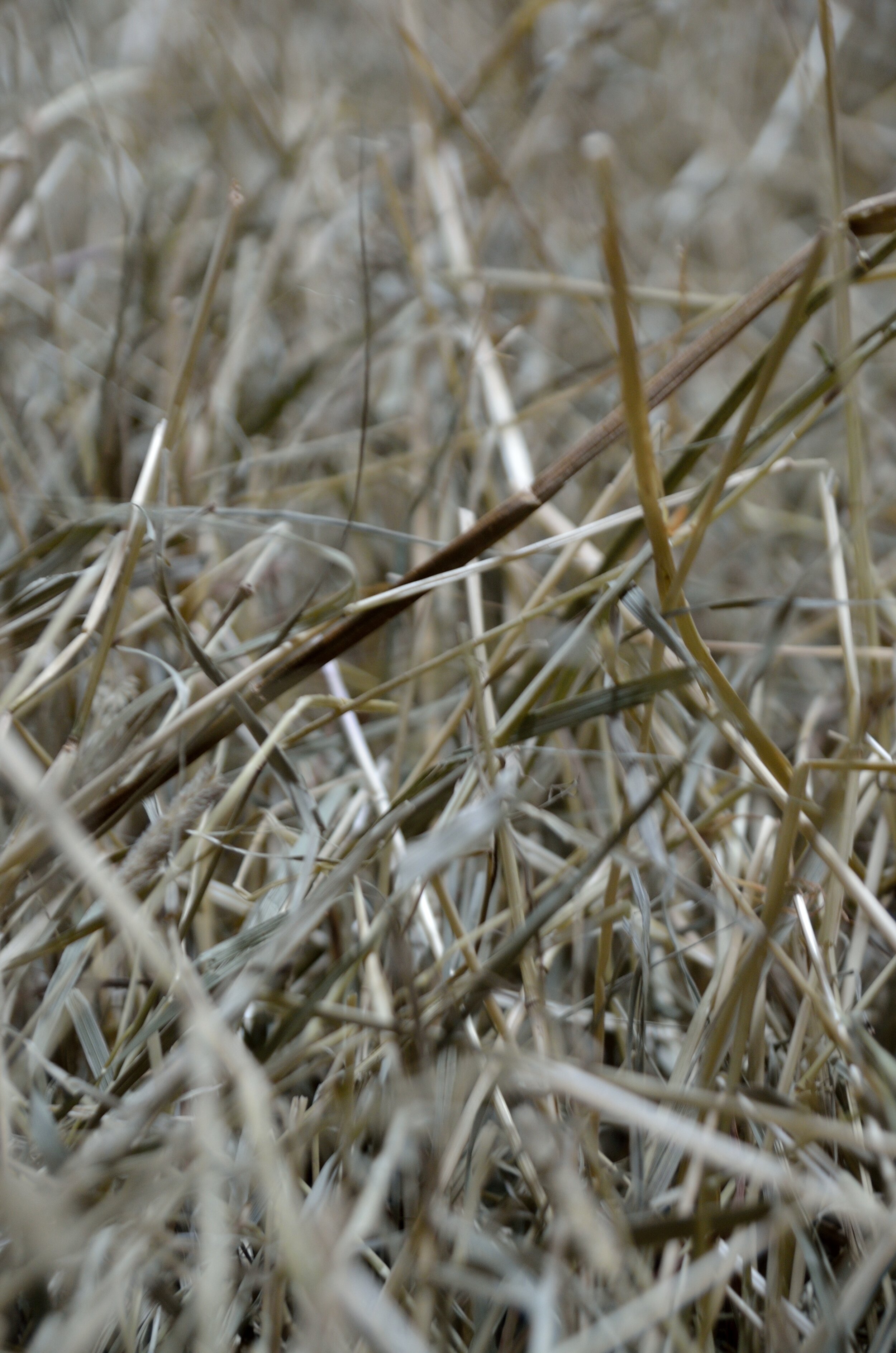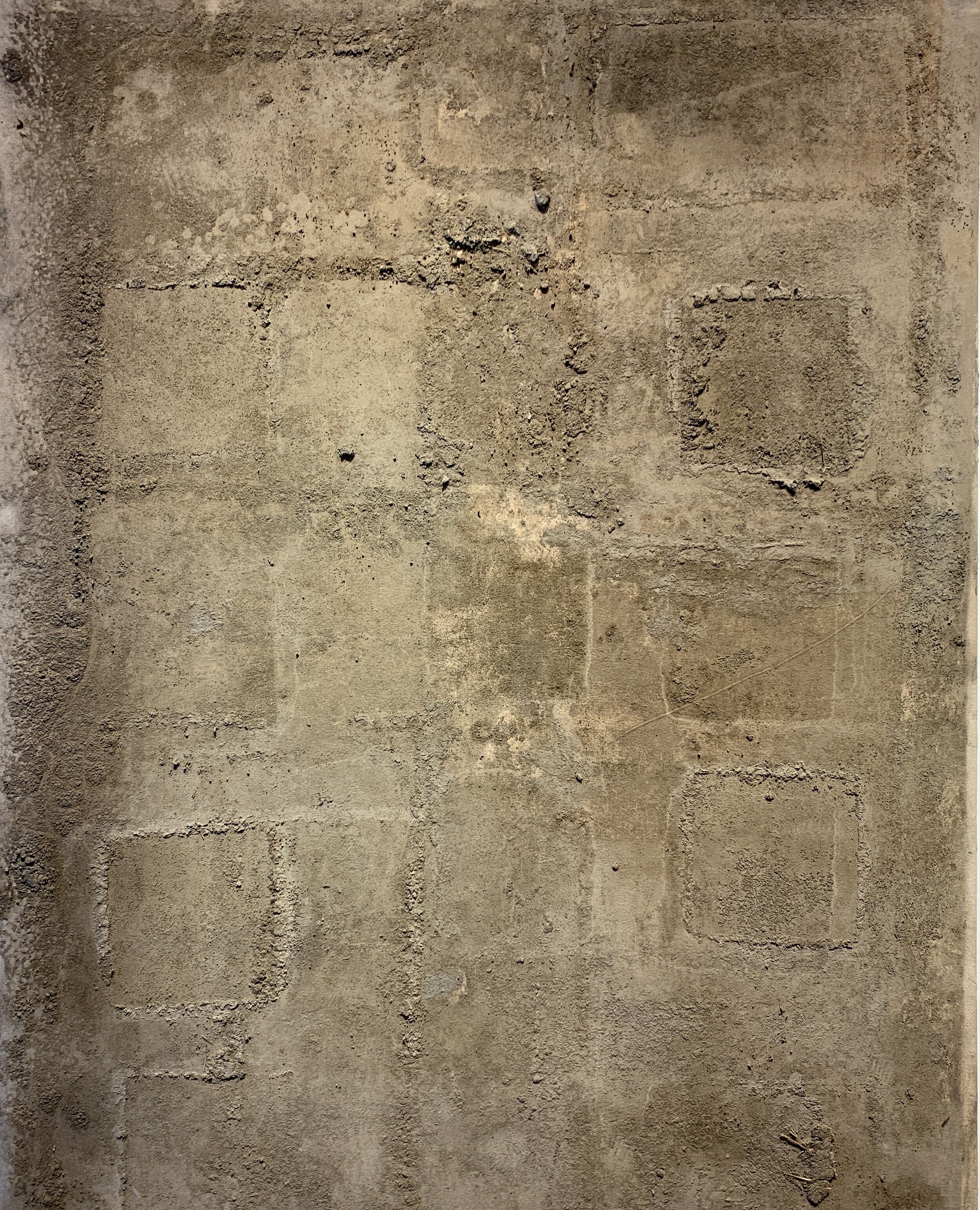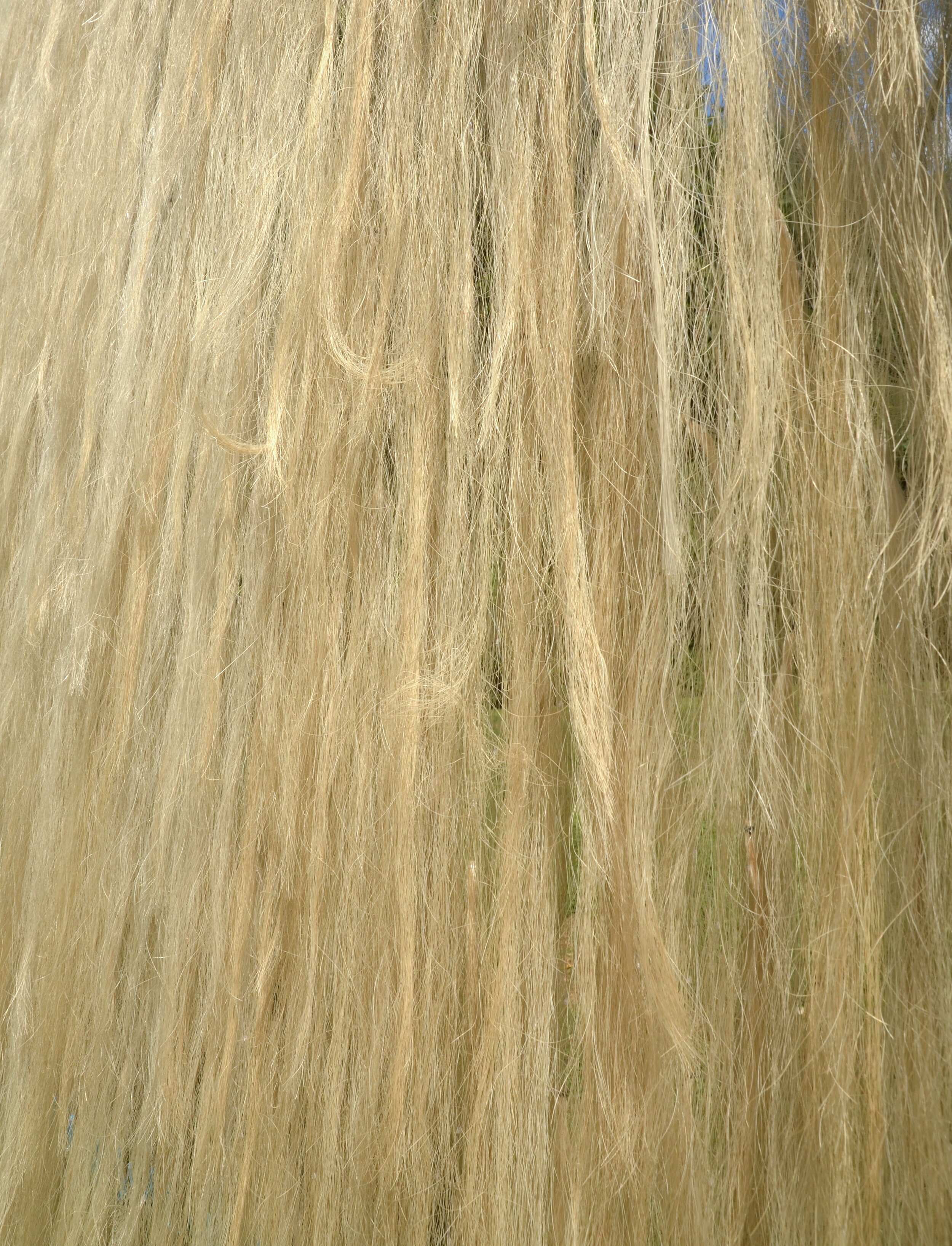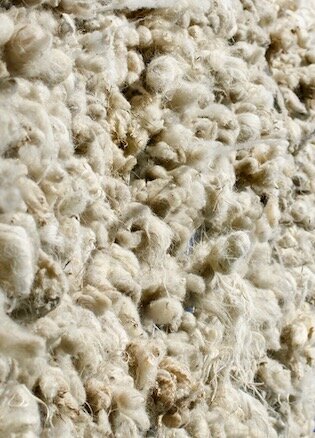← PORTFOLIO
Sculpture title: Ribbon
Poem title: Epitaph for a Barn
Artist: Nancy Winship Milliken (Vermont visual artist)
Poet: Chard deNiord (poet laureate of Vermont, Professor at Providence College)
How to turn the charred beams of an historic barn into art? This was the question that Vermont Sculpture Nancy Winship Milliken and Vermont poet laureate Chard deNiord posed to each other last summer as they met near the site of a fire that destroyed an hundred year old dairy barn at Shelburne Farms in Shelburne, Vermont. After several minutes of staring at the beams that had been dragged out of the collapsed barn, Milliken and deNiord settled on the idea of creating an evocative epitaph for the barn— something that both memorialized and elegized the destroyed landmark. deNiord suggested that he and Milliken think about the biblical phrase, "Let the dead bury the dead" as a starting point, acknowledging the futility and even irreverence of trying to create something transformative out of incinerated rafters. Milliken and deNiord then went their separate ways for several weeks in their mutual efforts to find respectful expressions that deferred to the barn's remains speaking for themselves as ruined yet iconic objects. Milliken took the first initiative by removing her hand from her memorial by allowing one of the beams, a synecdoche for the entire barn, to speak for itself as a drag mark on a linen shroud laid out on the field near the site of the former barn. deNiord followed by writing a poem that attempted to do justice to the mark it left.
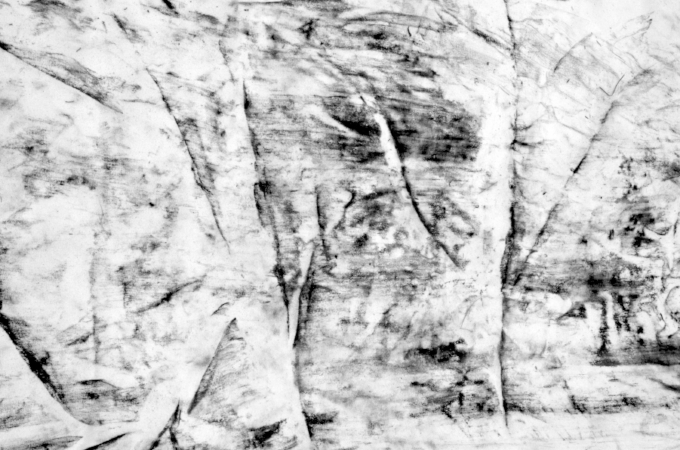
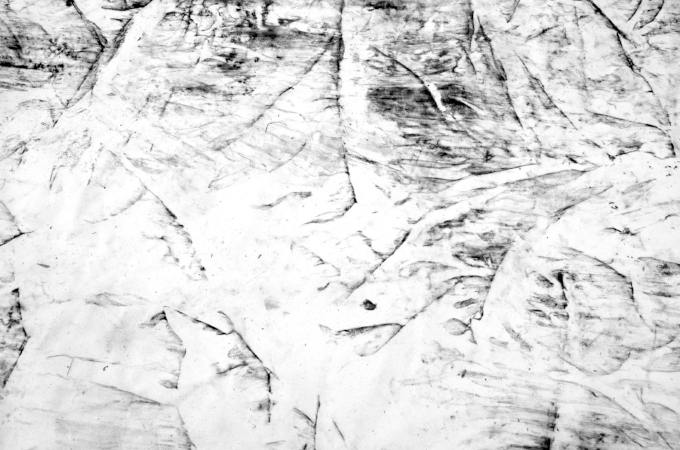

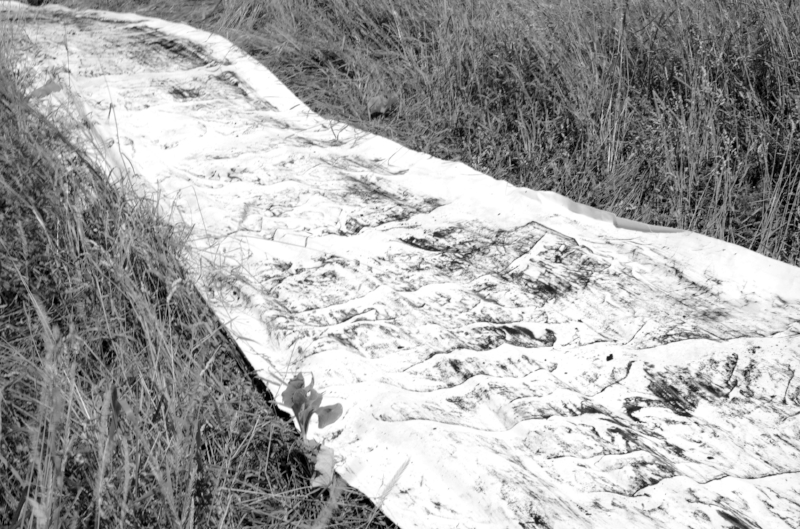
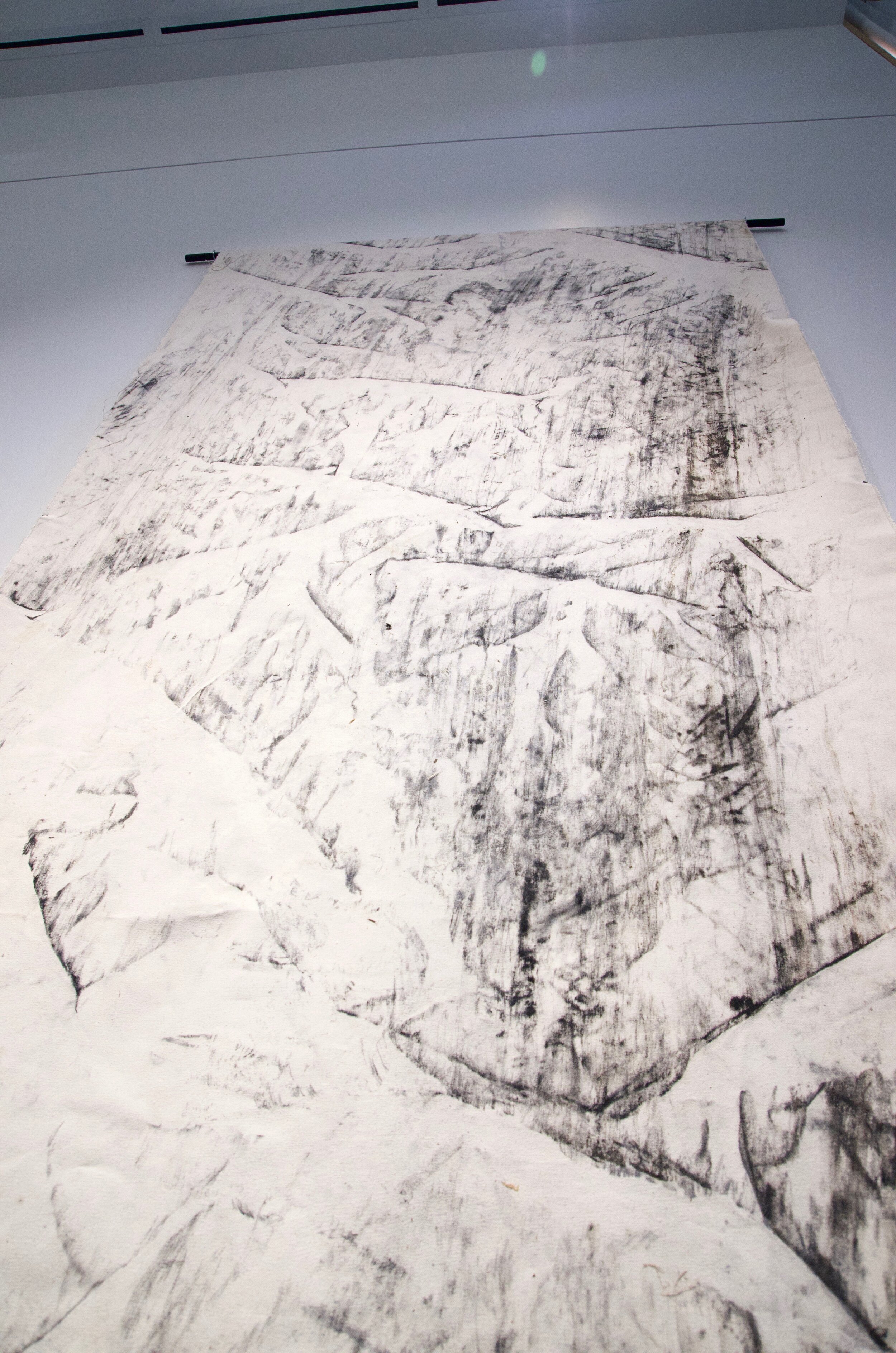

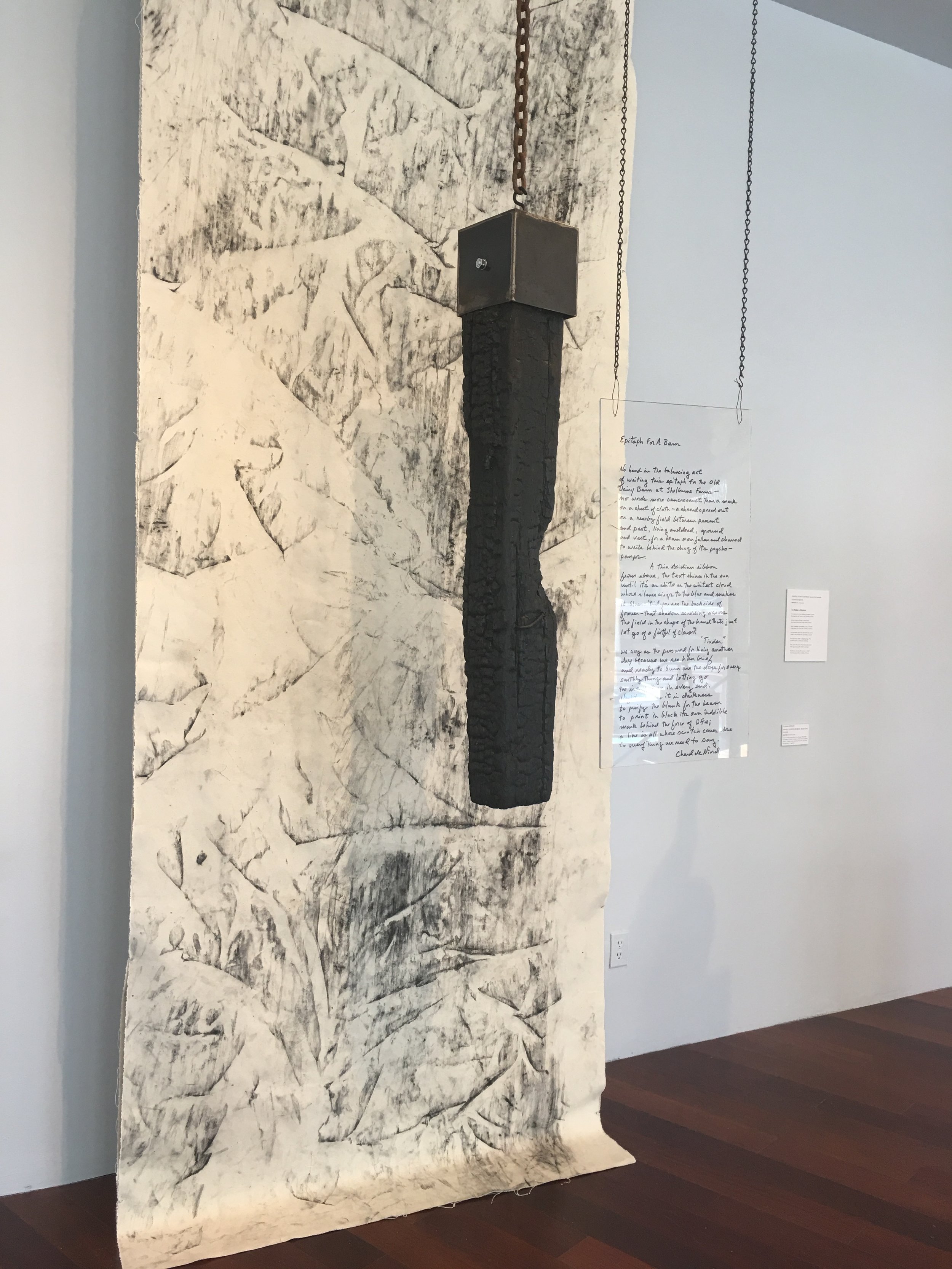
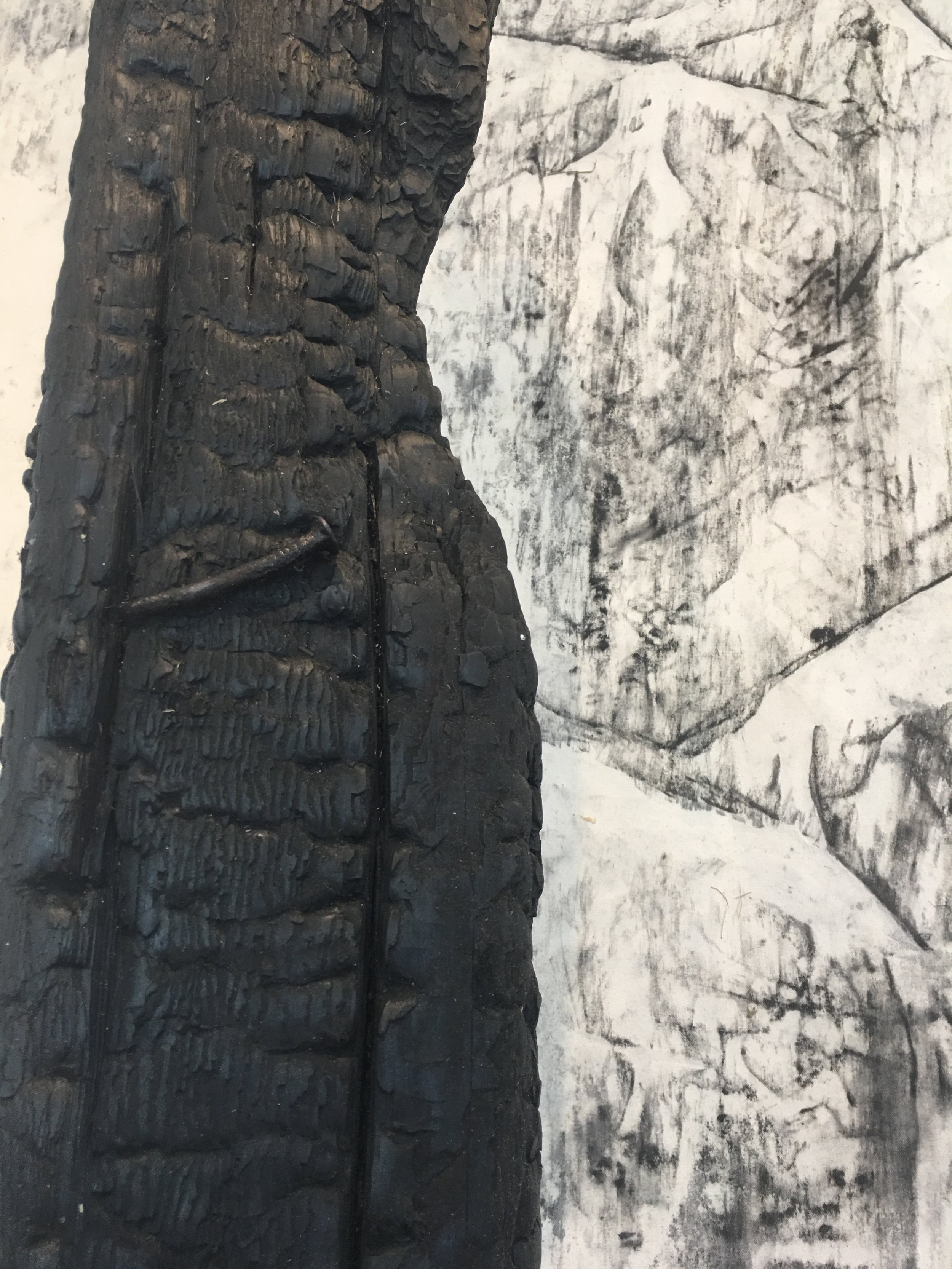
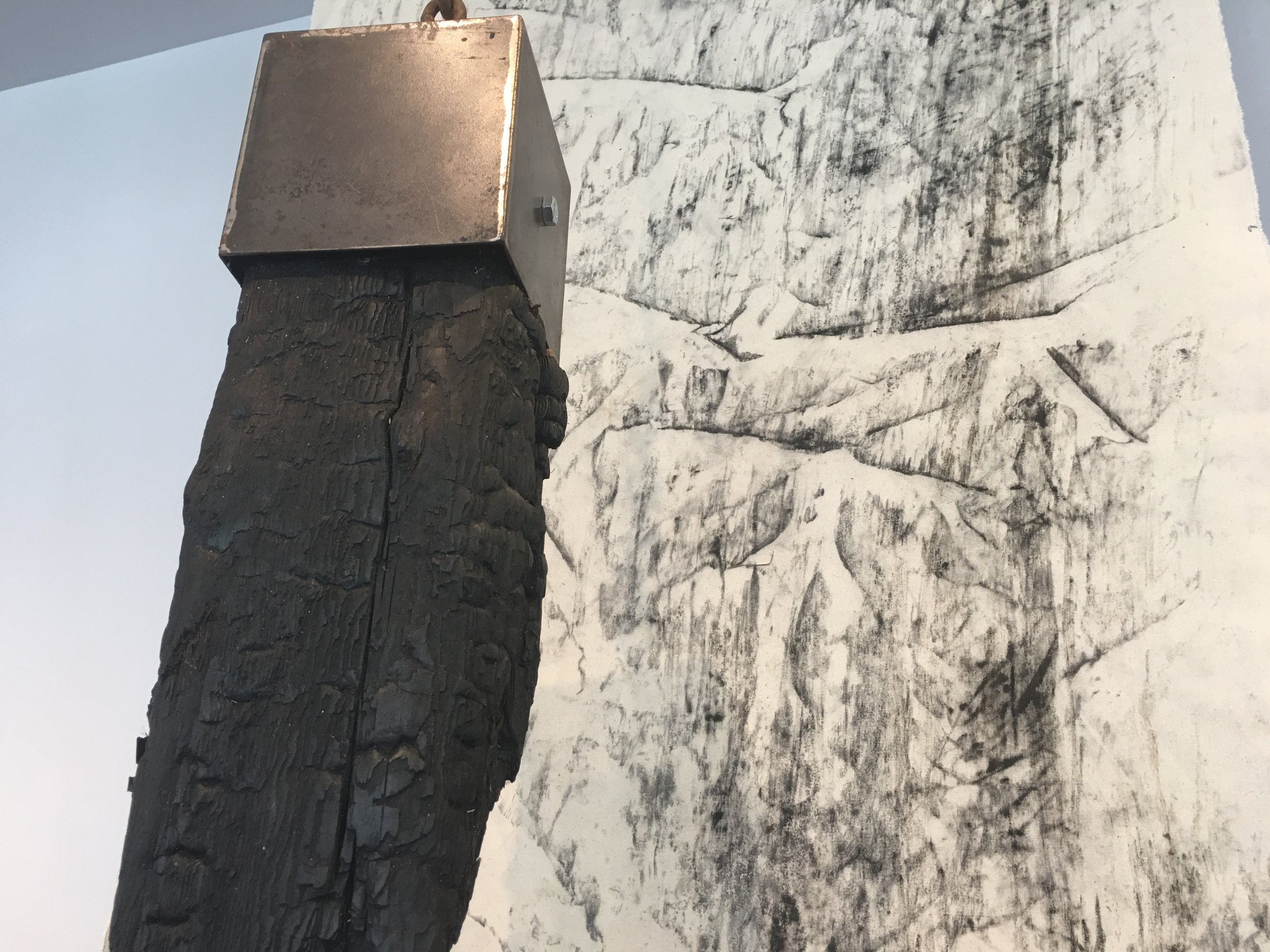
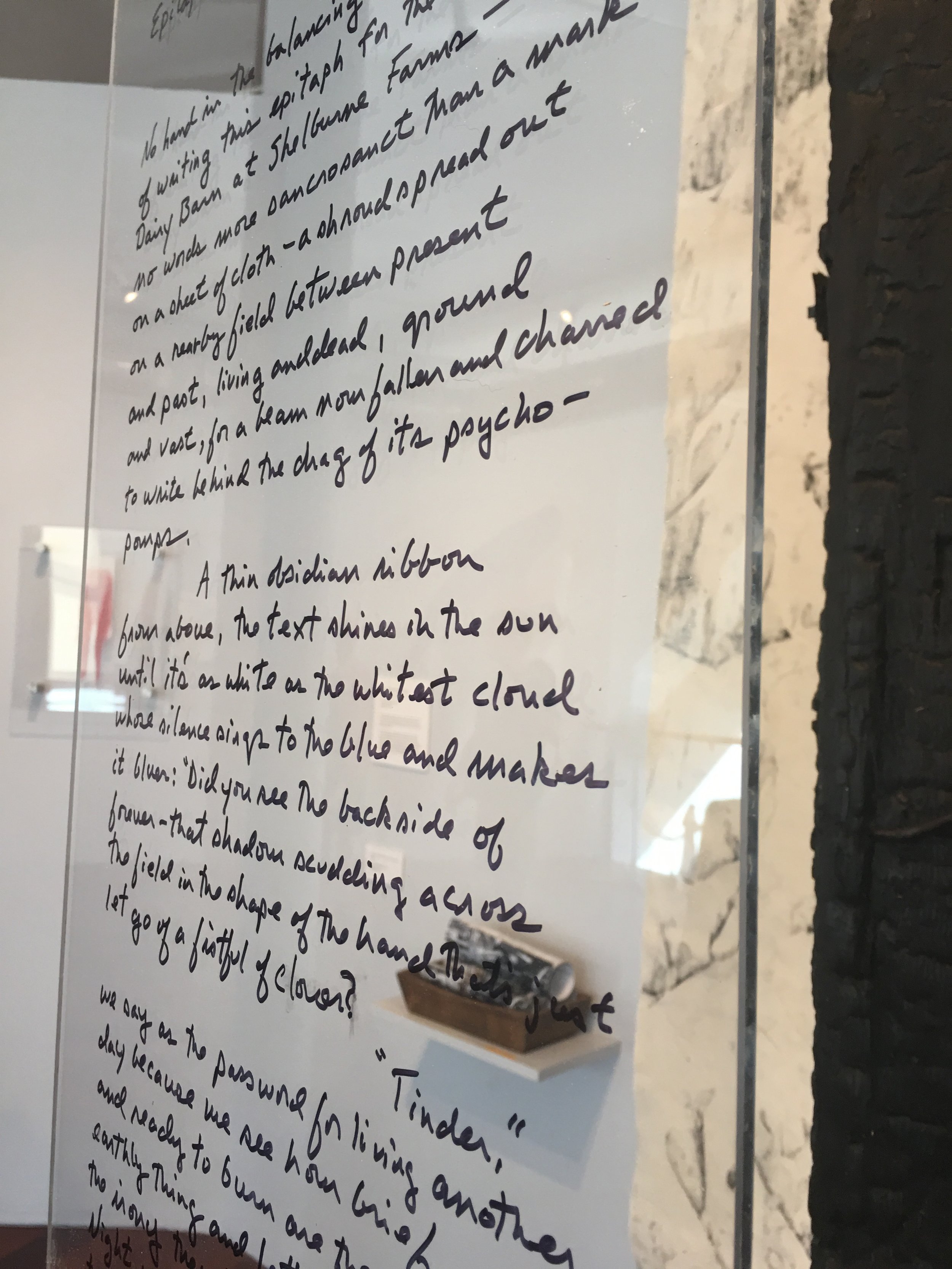
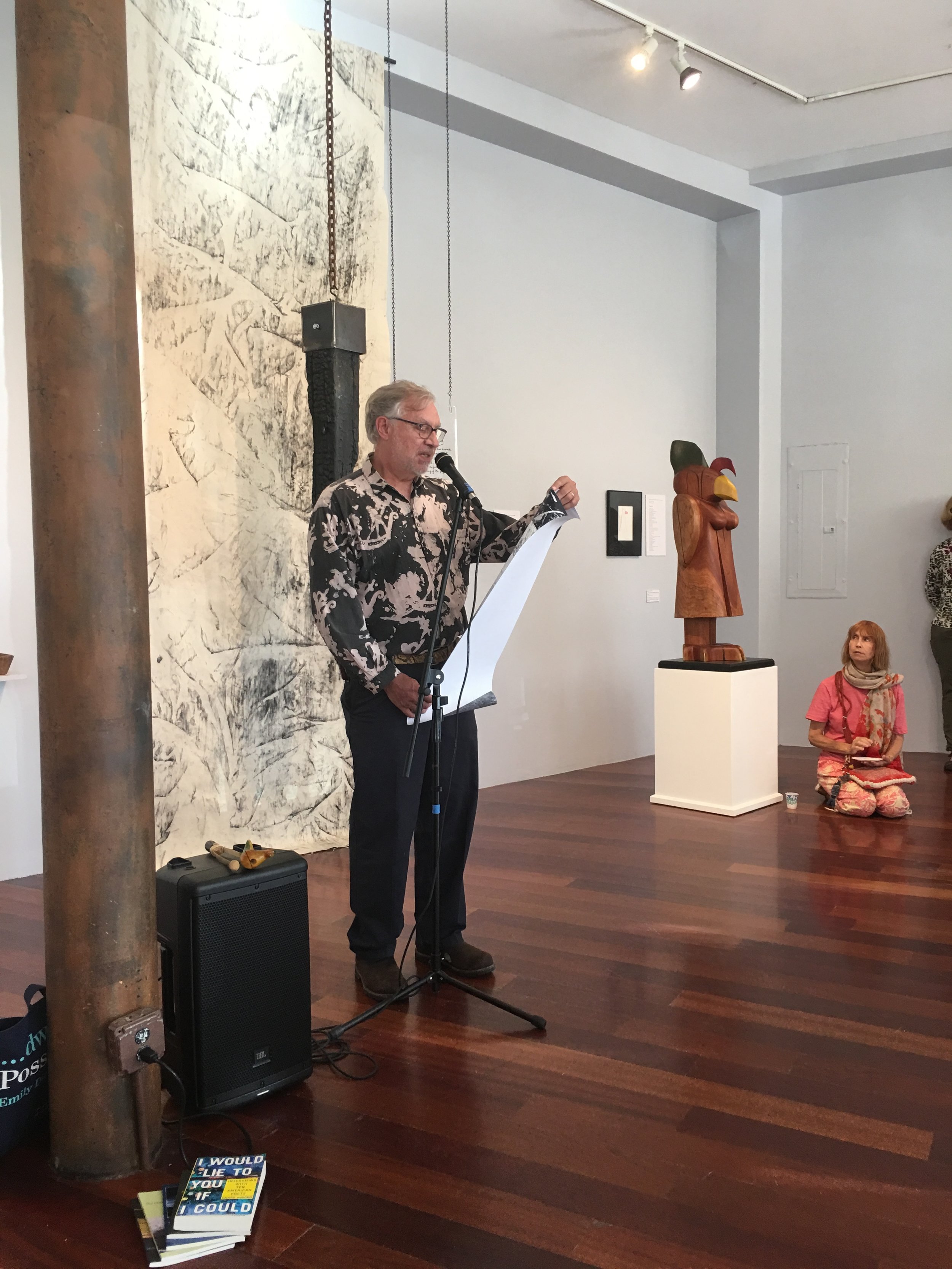
Charred remains from Shelburne Farms Dairy Barn in Shelburne, Vermont
EPITAPH FOR A BARN
No hand in the balancing act
of writing this epitaph for the Old
Dairy Barn at Shelburne Farms—
no words more sacrosanct than a mark
on a sheet of cloth—a shroud spread out
on a nearby field between present
and past, living and dead, ground
and vast, for a beam now fallen and charred
to write behind the drag of its psycho-
pomps.
A thin obsidian ribbon
from above, the text shines in the sun
until it’s as white as the whitest cloud
whose silence sings to the blue and makes
it bluer: “Did you see the backside of
forever—that shadow scudding across
the field in the shape of the hand that’s just
let go of a fistful of grass?”
“Tinder,”
we say as the password for living another
day because we see how brief
and ready to burn are the days for every
earthly thing and letting go
the irony then in every end.
Night washes it in darkness
to purify the blank for the beam
to print in black its own indelible
mark behind the force of life;
a line is all whose scratch comes close
to everything we need to say.
Chard deNiord
